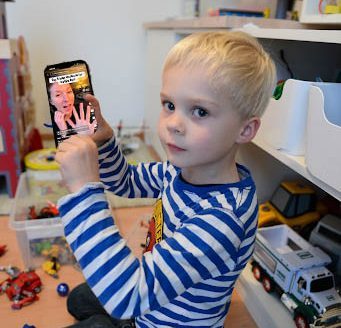Dealing with diabetes
Sophomore Johnathon Albano was lost, stepping onto the court only to be completely disoriented by the squeaking of shoes, dribbling of the ball and fast pace motion of the game. This was especially frusturating when spending multiple weeks prior to not able to focus and not understanding why. Albano experienced these symptoms along with others including weight loss, mood swings and dehydration for weeks before finding out the real reason behind this feeling.
This sensation followed him throughout the first week of school, when he was transferred to the hospital after learning that he had developed type 1 diabetes the incurable, genetic disorder.
“I think that he hardest part was figuring out that I had it, because I was devastated and knew that this would affect the rest of my life, which made it really hard to take in,” Albano said.
While waiting in the hospital, Albano explained that he had hoped that he would be diagnosed with type 2 diabetes, which would just mean eating better and taking pills, so when the doctor told him it was type 1 he explained “My family and I were disappointed and it was a pretty sad moment.”
Difference between type one and type two diabetes includes the fact that the cause of type one diabetes is in the pancreas, the organ that secretes insulin, is destroyed by auto antibodies, which is why people with type 1 diabetes always need insulin. On the other hand, the cause of type 2 diabetes is primarily a complicated medical condition called ‘insulin resistance.’ Type two diabetes can also be treated with pills and potentially cured with correct diet and exercise.
Albano said his mom took the diagnosis the hardest. She found it so hard to see her son go through something that no family would ever want to experience.
Albano was lucky to have noticed the symptoms when he did.
“If I hadn’t corrected it as early as I did I could have gotten really sick or probably even gone into a coma,” Albano said.
Johnathon has a father who is also diabetic, so he was already educated as well as a big help when acclimating to the new lifestyle.
“My dad is one of my biggest supporters, because I can definitely connect with him since he can relate to my situation.”
Some of Johnathon’s other supporters are his friends, who feel that their relationship has gotten closer since Johnathon was diagnosed. They all came and visited him in the hospital before he was released.
“When I heard Johnathon was in the hospital it hit me like a wrecking ball. I couldn’t believe it, it seemed like it wasn’t really happening,” sophomore Elliott Nasby said.
The beginning of this change proved to be a struggle for Albano.
“The first week was hard because I didn’t want to do any of it and I had to do it. I went from doing nothing and being carefree to having all of this extra stress to worry about. It just seemed like such a big adjustment,” Albano said.
Albano has to deal with complications, such as looking up nutritious facts with the help of smart phone apps when eating at restaurants. He then has to check his blood sugar before each meal and depending on how many carbohydrates, he takes a certain amount of insulin, which he takes through a shot.
“Sometimes we might eat healthier too, because we want to do it with him and fight the battle with him. We always try to make him feel as included as possible and not leave him out of anything,” Nasby said.
Johnathon is confident that after a while he will be able to become more aware of how he is feeling, and dealing with diabetes will be like second nature to him. He hopes to take something positive out of this, and knows that if he can tackle diabetes, he can tackle anything.
“With all of the support I have it is a lot easier than it should be. I am so lucky to have such supportive friends and family and overall, I think it is a good change in lifestyle,” Albano said.
Your donation will support the student journalists of Hagerty High School. We are an ad-free publication, and your contribution helps us publish six issues of the BluePrint and cover our annual website hosting costs. Thank you so much!






